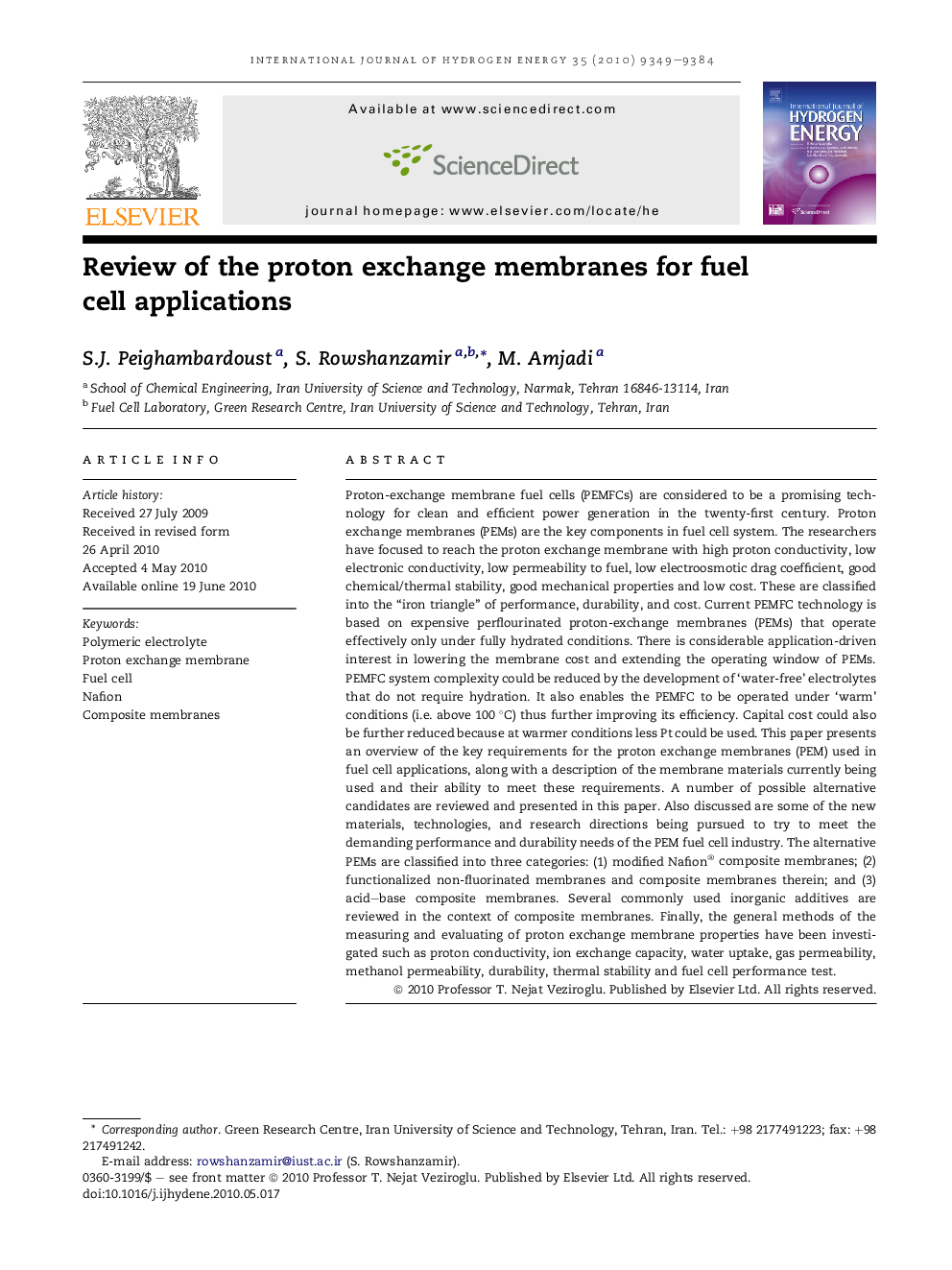| کد مقاله | کد نشریه | سال انتشار | مقاله انگلیسی | نسخه تمام متن |
|---|---|---|---|---|
| 1276994 | 1497600 | 2010 | 36 صفحه PDF | دانلود رایگان |

Proton-exchange membrane fuel cells (PEMFCs) are considered to be a promising technology for clean and efficient power generation in the twenty-first century. Proton exchange membranes (PEMs) are the key components in fuel cell system. The researchers have focused to reach the proton exchange membrane with high proton conductivity, low electronic conductivity, low permeability to fuel, low electroosmotic drag coefficient, good chemical/thermal stability, good mechanical properties and low cost. These are classified into the “iron triangle” of performance, durability, and cost. Current PEMFC technology is based on expensive perflourinated proton-exchange membranes (PEMs) that operate effectively only under fully hydrated conditions. There is considerable application-driven interest in lowering the membrane cost and extending the operating window of PEMs. PEMFC system complexity could be reduced by the development of ‘water-free’ electrolytes that do not require hydration. It also enables the PEMFC to be operated under ‘warm’ conditions (i.e. above 100 °C) thus further improving its efficiency. Capital cost could also be further reduced because at warmer conditions less Pt could be used. This paper presents an overview of the key requirements for the proton exchange membranes (PEM) used in fuel cell applications, along with a description of the membrane materials currently being used and their ability to meet these requirements. A number of possible alternative candidates are reviewed and presented in this paper. Also discussed are some of the new materials, technologies, and research directions being pursued to try to meet the demanding performance and durability needs of the PEM fuel cell industry. The alternative PEMs are classified into three categories: (1) modified Nafion® composite membranes; (2) functionalized non-fluorinated membranes and composite membranes therein; and (3) acid–base composite membranes. Several commonly used inorganic additives are reviewed in the context of composite membranes. Finally, the general methods of the measuring and evaluating of proton exchange membrane properties have been investigated such as proton conductivity, ion exchange capacity, water uptake, gas permeability, methanol permeability, durability, thermal stability and fuel cell performance test.
Journal: International Journal of Hydrogen Energy - Volume 35, Issue 17, September 2010, Pages 9349–9384